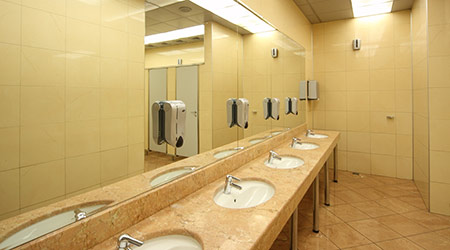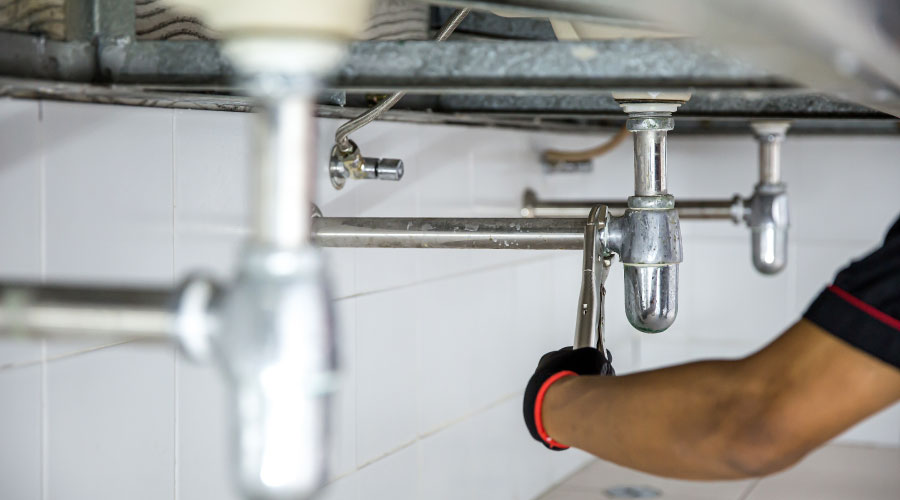Restroom Water Conservation Issues Related to Faucets, P-Traps, Signage
Last of a 4-part article on understanding legal and regulatory issues in restroom retrofits and new designs
Water conservation issues related to restroom design also include lavatory faucets, p-traps, and signage. Here is a closer look at each.
Lavatory faucets. Current national standards require that commercial and public lavatory faucets use no more than 0.5 gpm. For these to work properly, aerators and the laminar flow restrictors used in hospitals must remain installed.
“When an aerator or flow restrictor is removed, the faucet will flow at 3 gpm to 6 gpm, depending on the design and line pressure,” explains Hoffman. “Checking to ensure that aerators are still installed and flowing at proper rates is a key factor in ensuring that water savings are maintained. Aerators that require a special key to remove help prevent theft and unauthorized removal of aerators.” In public lavatories, faucets should have aerators with flow rates no greater than 0.5 gpm.
“For self-closing faucets, code requires that no more than 0.25 gallons of water are used per activation,” observes Hoffman. He adds that “if the 0.5 gpm aerator is removed they become a huge water waster.”
Green plumbing codes and standards for private lavatory faucets set maximum water use at 1.5 gallons per minute (gpm). For private bathrooms in hotels/motels, hospitals, and skilled nursing and long-term care facilities, the flow rate for lavatory faucets should not exceed 1.5 gpm at 60 pounds per square inch (psi), notes Hoffman. These are also encouraged to use aerators that have flow rates of less than 1.5 gpm.
“Many find that faucet flow rates of 1.0 to 0.5 gpm are quite acceptable,” notes Hoffman. He also suggests they follow EPA WaterSense’s high-efficiency faucet specification.
P-traps. Floor drain p-traps need water in them to ensure maintenance of their seal. “If this water seal dries out, sewer gasses will enter the space,” says Hoffman. “Less than a tablespoon of water daily is needed to replace evaporative loss and maintain the seal in most traps.” Several different types of code-approved p-trap primers are available.
Faucet-type primers, frequently installed in older facilities, run continuously, wasting significant water. “The faucet-type primers have been banned from code for decades and should be replaced if found,” Hoffman says.
Signage. Even when not specified in local plumbing codes, restroom signage is essential to maintaining an efficient and compliant facility. According to Hoffman, the sign should request leaks and other plumbing problems be reported to appropriate building management and include a phone number.
Legal requirements, regulations, codes, and standards all can be met in retrofitting or designing new restrooms with many good product options. But, as Hoffman notes, “maintenance is the key element. Without it, toilets, urinals, lavatories, and floor drains are guaranteed to fail.” In the United States, combined water and sewer costs for commercial users average about one cent a gallon ($10 per thousand gallon or $7.48 per hundred cubic feet), according to Hoffman. “A slightly dribbling faucet (0.05 gpm) will cost more than $200 per year — much more if it is hot water.”
Rita Tatum, a contributing editor for Building Operating Management, has more than 30 years of experience covering facility design and technology.
Related Topics:















